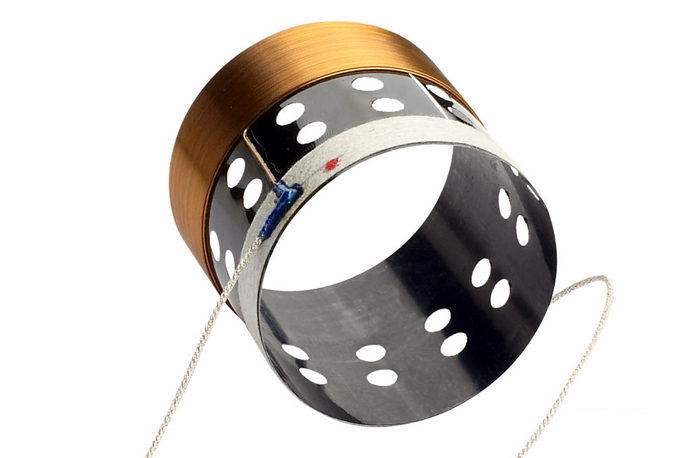
The function of the speaker voice coil
When the speaker is working, the voice coil is responsible for the power part of the speaker. After being energized, it becomes an electromagnet, which exerts force on the permanent magnet. The force changes according to the size of the current, causing the sound film to vibrate. The stroke length, strength, speed, etc. of the voice coil will all affect the sound quality.
The voice coil is the heart of the speaker and is generally made of copper enameled wire wrapped around the basin frame. The voice coil is also the main cause of the sound pressure level, impedance curve, distortion and transient characteristics of the speaker, and also determines the power and life of the speaker. Damage to speakers is often caused by damage to the voice coil. The quality of a voice coil depends on whether it can withstand high temperatures and whether it has strong bonding force.
The voice coil is a key component in the speaker’s conversion from electricity to sound. The electrical energy input to the voice coil is converted into mechanical energy to drive the diaphragm to produce sound. The voice coil is made by winding enameled wire on the core barrel by a winding machine. The parameters and quality of the voice coil winding have a great impact on the rated power frequency characteristics, total harmonic distortion and service life of the speaker.
Speaker units for high, mid and bass have different requirements for voice coils. How to select voice coil parameters within the specified size range can produce greater value.The voice coil of the tweeter has relatively thinner wires. Copper wire and aluminum wire are commonly used in the tweeter voice coil. Aluminum wire is lighter than copper wire and can obtain better transient response. Copper wire The resistance is smaller, and aluminum wire is inferior to copper wire in terms of endurance and durability.
The voice coils of midrange and woofer speakers are mostly wound with copper wire, because copper wire is thicker and can withstand high power. Some woofers on the market choose to wrap several more layers of voice coils in order to increase their carrying capacity.
The general voice coil is wound on a paper tube, but paper is not a good conductor of heat, but it has the advantage of being lightweight. In order to improve the heat dissipation efficiency, some speakers will wind the voice coil around an aluminum tube. The heat dissipation effect is significantly improved compared to the paper tube, and the load-bearing capacity is also significantly improved.

Common faults of speaker voice coils.
The enameled wire used for winding the voice coil can be divided into copper-aluminum wire and copper-clad aluminum wire according to the material. Copper wire is easy to solder and is widely used in high-performance speakers. In order to improve the performance of the speaker, increase the resolution and improve the damping, it is necessary to use oxygen-free copper wire with a purity of 5N9 or above.
The aluminum wire has the advantages of light weight and high efficiency, which can improve the treble and sensitivity of the speaker. It also has the advantages of light weight and high efficiency. Short plates that are difficult to process and weld. Therefore, it should only be used when there are special requirements. Copper-clad aluminum wire is the combination of the advantages of both. Although the welding quality is light, the price is high so it can only be used in occasions with higher requirements.
Common faults include the following two types:
- Contact ablation: If the micro-speaker is pressed for a long time, it is easy for the speaker contacts to ablate and produce impedance. The current flowing through the electromagnetic coil weakens, the electromagnetic attraction decreases, and the armature cannot be attracted to drive the diaphragm to vibrate normally, resulting in hoarseness or even no sound. There is also an example where when the horn is sounded continuously, a momentary strong current passes through the impedance during the pressing period. It will work normally, but will not continue to work when the current ends, with good and bad conditions.
- There is a gap in the seal, causing moisture: Although the inside of the micro-speaker is sealed, if the seal is not tight and water vapor or mist in the air enters during the car wash, the contacts will not work properly due to moisture.
